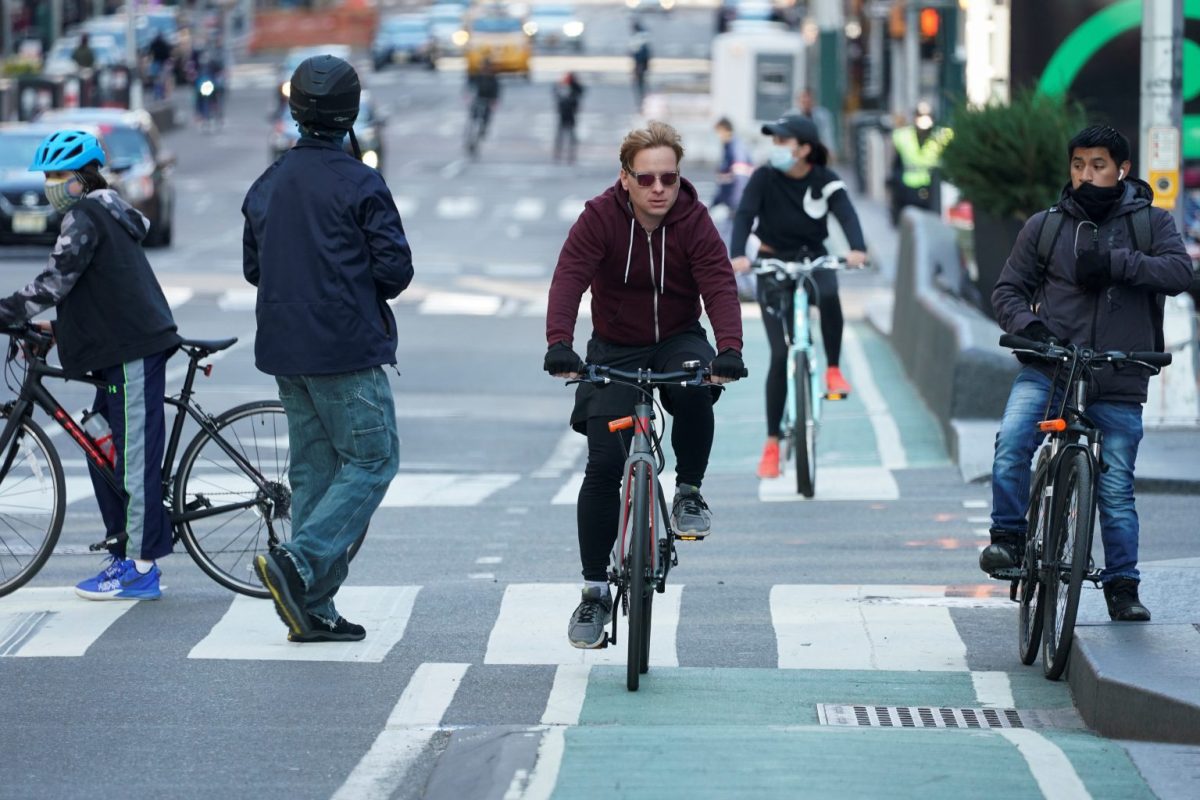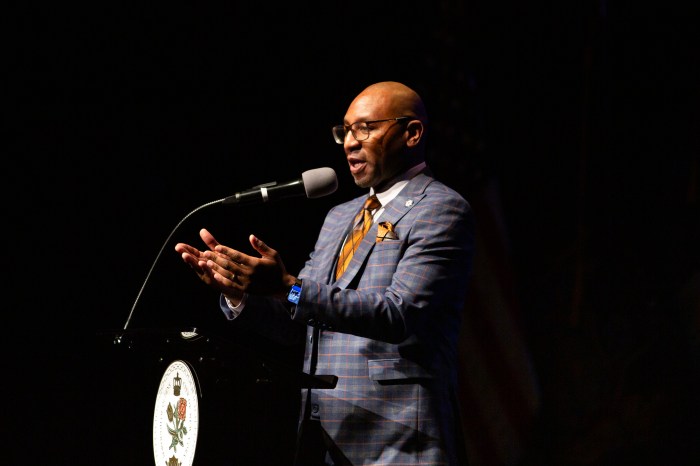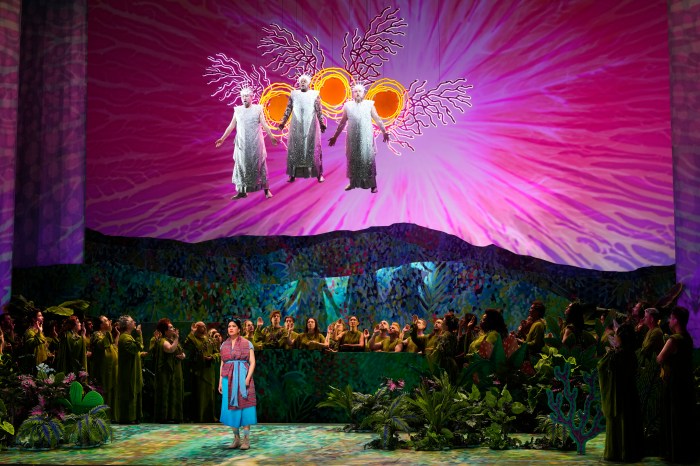Weeks after Mayor Bill de Blasio launched and then quickly canceled an “open streets” program, the City Council wants to overturn that decision with a bill that would close up to 75 miles of roadways for public recreation amid the coronavirus pandemic.
City Council Speaker Corey Johnson and Manhattan City Councilwoman Carlina Rivera announced Friday new legislation that would open city streets to pedestrians and cyclists across the five boroughs. The bill will be introduced on Wednesday during the City Council’s first-ever remote stated meeting.
During a press conference on April 17, de Blasio said he hasn’t yet seen the details of the legislation, and he wanted to speak with City Council representatives further. Yet he also indicated that he didn’t want to enact policies that counteract efforts to ensure public safety, or misuse public resources.
The legislation comes weeks after the de Blasio Administration nixed its pilot program that closed a handful of New York City streets to vehicular traffic so nearby residents could use them for exercise and fresh air.
The pilot program, aiming to alleviate crowding problems in city parks, launched days after a March 22 press conference during which Governor Andrew Cuomo publicly shamed the city for ignoring social distancing calls.
But just two weeks after it launched, the open streets program was abruptly canceled on April 6. The Mayor’s office said not enough people were using the closed streets to warrant both the roads’ closure and the use of police officers to keep the roadways shut.
De Blasio alluded to those reasons during his remarks Friday.
“We do not create a situation where people think they can walk in the middle of the street but in fact there’s still vehicles there,” the mayor said. “We can not create a situation where emergency vehicles and crucial deliveries can’t get through. We can not create a situation where we need to use enforcement personnel we still don’t have enough of, drawing them off of all the things that are crucial.”
De Blasio said his team would “look at how things evolve, maybe the situation opens up over time and we have other options.”
Even so, Johnson and Rivera maintained that the need for open street space will be more crucial in the weeks ahead, especially with the arrival of warmer weather.
“New Yorkers don’t have the street space they need to maintain proper social distancing, which we know is essential in this public health crisis,” Johnson said. “While we want to work collaboratively with the administration to open streets, this issue is so important and so urgent that we are taking legislative action to make it happen ourselves. Other cities across the country and around the world have demonstrated that this is doable. There is no reason we can’t do this here.”
The legislation includes a target of closing 75 miles of streets across the five boroughs, though it’s not clear exactly which streets would be affected.
“For years, New York City led the nation in developing innovative solutions to our biggest urban challenges,” Rivera said. “And as the weather gets warmer and more New Yorkers seek brief respites from stuffy, cramped and often un-air conditioned homes, we have to provide them with outdoor spaces where they can properly social distance, and our parks just can’t do the job alone.”
Twelve other City Council members publicly voiced their approval for the open streets bill on Friday: Ydanis Rodriguez, Fernando Cabrera, Daniel Dromm, Costa Constantinides, Ben Kallos, Peter Koo, Brad Lander, Stephen Levin, Mark Levine, Carlos Menchaca, Keith Powers and Antonio Reynoso.
Transit activists also voiced support for the measure, including Transportation Alternatives Executive Director Danny Harris.
“Streets account for roughly 80% of New York City’s public space, and their ambitious open streets program will give 75 miles of streets back to people, their rightful owner, when New Yorkers desperately need them,” Harris said. “We call on the City Council and the mayor to implement this plan without delay, and, over time, to expand the program to support the needs of all New Yorkers. Transportation Alternatives stands ready to support our city in providing safe space for residents who must be out and continuing to lead the nation on our approach to safe and open streets.”
Danny Pearlstein, policy and communications director for the Riders Alliance, added that opening more streets to pedestrians would have the additional effect of increasing safety for essential workers commuting to and from their jobs.
“For transit riders, open streets mean safer passage to and from subway and bus stops,” Pearlstein said. “Open streets can also reduce crowding on subways and buses, enabling people with short trips to walk or cycle to their destination safely rather than pack onto public transit.”
With additional reporting by Alejandra O’Connell-Domenech.
This story first appeared on amny.com.































